- Home
- Tom Clancy
Battle Ready Page 30
Battle Ready Read online
Page 30
After the meeting, I would have been blind to miss General Johnston’s and Ambassador Oakley’s frustration. Theirs mirrored mine.
More bad news came that day: French troops in Mogadishu had shot up an unarmed bus, killing two Somalis and seriously wounding seven others, after an evidently confused bus driver had run a French roadblock. An angry Somali mob had gathered around the French positions, and we had to move in, negotiate some kind of peace with the warlords, and calm things down.
Later, other complaints about French troops in Mogadishu eventually led us to move them out to an area near the Ethiopian border, where they did great work. This location was no less difficult than Mogadishu, but it was politically less sensitive.
We spent the next days getting the operation rolling.
I had already broken our area of responsibility into eight Humanitarian Relief Sectors65 (or HRSs)—a term we’d invented to avoid using traditional military terms (like “Sector of Operations” or “Zone of Action”). We wanted to convey the intent of our mission to the people, press, and relief workers as “softer” than a normal military action. Each HRS was unique, with boundaries based on factors like clan and tribal boundaries, political boundaries, geography, military span of control, capabilities of our forces, established distribution sites, security threats, and lines of communications.
Early on we had absorbed the Provide Relief operation out of Kenya and integrated it into our efforts. Soon other U.S. and international forces were flowing in at a rapid rate.
The Marines from the MEU, who’d led the way into Somalia, were quickly joined by additional Marines we flew in and married up with equipment from Maritime Prepositioning Ships that arrived in Mogadishu’s port on the twelfth of December, our third day on the ground. The 10th Mountain Division’s arrival shortly afterward allowed us to move out quickly to complete the second phase.
Though General Hoar had originally envisioned seven allied forces joining the U.S., following his 3-3-1 Strategy—three African national forces, three Arab national forces, and one Western national force—that went out the window the first day, as forces from all over the world started clamoring to join up. Forces from twenty-six nations ended up participating in UNITAF; and as many as forty-four nations had lined up when we had to shut the door.
These forces were a mixed bag. Some came with limited capabilities, some came burdened with restrictive political direction, some came with big demands for U.S. support, and a blessed few came with highly credible and capable units ready to take on any mission. My job was to find a place to put them, integrate them into the operation, and assign them missions. This was no small task.
My staff took to calling me “the Century 21 man” after I somehow found places where a rapid and unanticipated succession of international troops could lay their heads and set up camp. I’d get a call out of the blue that troops from someplace like Zimbabwe or Botswana had landed unexpectedly at the airport and were looking for direction. I’d then slip on “the yellow jacket”—as my staff put it—and try to “sell them some real estate.” I’d go out to meet their commanders—or their advance team, if we were lucky (some militaries were not aware that it helps to send an advance team before they launch the whole force). The “choice lots” were obviously out of harm’s way and near major facilities. The less desirable “lots” were in the HRSs out in the bush, where the austere environment and high threat made a “sale” difficult.
Since individual contributions—such as a transport unit, say, or a field hospital—often came in bits and pieces, we devoted considerable creative energy to the marrying up of these with other forces, taking into account factors like language, cultural affinity, political compatibility, and military interoperability.
As the operation evolved, the State Department continued to solicit new contributors for UNITAF. The variety of international troops making up the Coalition staff very quickly turned our headquarters into the bar scene from Star Wars. At its peak, Provide Hope had 39,000 troops under UNITAF command—though not in every case the same troops who started the operation. Troops came and went, and, where possible, were replaced with specialized units, more suitable for the later phases of the operation. Thus, an infantry unit might be replaced by an engineer unit.
This dynamic flow required careful assignment and management, as did issues such as Rules of Engagement, logistics support, and area assignment; and the job of assigning and managing fell on me. The law of diminishing returns set in.
I got a lot of strange requests for support. Some of the strangest included fresh food (that is, live goats, sheep, and chickens); full medical support, to include medical malpractice coverage; and, naturally, money to pay for the troops. We politely declined all of these requests.
For all the difficulties we had to deal with—or put up with—it was great to have this wonderful rainbow of Coalition forces working with us. We had enormous respect for them. I especially enjoyed visiting the Coalition units to coordinate operations . . . or just to check on how things were going. This often brought the added benefit of a delicious, and often exotic, meal.
The African troops were particularly impressive. They asked for little or nothing, and were willing to take on the toughest missions. Our Marines always gave them the highest praise possible for their courage and skill: They wanted them assigned to their sectors.
Since the embassy compound was quite large (it once had, in better times, a nine-hole golf course, for example), we were able to co-locate liaison teams from the various coalition forces close to our headquarters.
One night, as General Johnston and I were walking around the headquarters compound, we happened to pass the row of tents occupied by the African liaison teams. Except for a dimly lit bulb wired to our field generators, each tent was totally bare: no field desks, no cots, no folding chairs, nothing to make the tents livable—much less workable or comfortable. The contrast with the other coalition facilities was stark.
We quickly had our engineers build them makeshift desks, tables, and other field furniture.
“We’re eternally grateful for your kindness,” the liaison teams told us.
“You’ve more than earned it,” I assured them.
THE PRESENCE of the liaison teams was not an unmixed blessing.
Our policy was to have coalition personnel clear their weapons near the compound entrance as they entered. The idea was to remove magazines or live rounds from the weapons, and then to confirm they were safe by a test firing into a barrel of sand. The sentry and clearing barrel were just below the blown-out window of my small second-floor office, which made me sharply aware of any mistakes. There’d be one or two accidental discharges a day, as the sentry tried to explain how to clear weapons to the often clueless coalition troops. One of these accidental rounds zinged by my feet as I was enjoying a late-night cigar near a ruined fountain in front of our gutted headquarters. So much for my pleasant, peaceful moment.
We got occasional rounds from firefights outside the compound as well. One night as I slept, three heavy, .50 caliber machine-gun rounds hit the concrete window frame of my office. This got my attention. Another time I was pinned down at our piss tube when a firefight broke out nearby and made my location the impact zone for the fusillade that erupted. I zigzagged back to the cover of our building, hitting the deck more than once. My appreciation for indoor plumbing considerably increased after that.
ALL THE WHILE, I spent as much time as I could watching over our operations outside Mogadishu.
General Johnston and I traveled constantly out to the units in the field, to get a firsthand sense of what was happening and what was needed. At other times, I went on patrols with the Canadians, visited feeding stations guarded by the Pakistanis, accompanied Marines on weapons searches, and visited orphanages with our Civil Affairs units.
I particularly remember a trip to our Marines in the south, working our most remote and desperately needy sector. As we drove up to this dusty, arid camp, with only
scrub trees and bushes to break up the reddish brown terrain, I couldn’t help noticing a remarkable sea of bright yellow in the distance. As we got closer, I realized that every one of the suffering multitudes who had drifted into the camp on their last legs was wearing a yellow T-shirt and yellow sarong. The Marine commander had come up with a scheme to brighten up the spirits of these poor people with color. At his request, his wife back at Camp Pendleton organized a drive for the families back home to contribute anything yellow—material or clothes. It worked. As people came in for food, water, medicine, and shelter, they were given their yellow garments. You could see the immediate effect in their weak smiles. But the pickup in their morale had long-term effects as well. It actually helped them get physically stronger.
FROM VIETNAM ON, I’ve had the habit of immersing myself in the people and cultures of the countries where I’ve been stationed. I kept up this long-standing tradition in Somalia—sucking up everything I could about Somali society and culture. I read anything I could get my hands on; I met frequently with Somalis, both individuals and groups; and Somalis from the States, whom we had contracted to translate and liaise for us, provided additional insights.
One of these last turned out to be Aideed’s son, a student in California and a corporal in the Marine Corps Reserve when we called him up to come home. Though his surname, like his father’s, was Farrah, we didn’t actually make the connection until we had him in Mogadishu. Once we knew who we had, it was obvious that using him as a translator or liaison would be difficult, so we kept him at the headquarters (where the two of us had occasional friendly conversations). After his father’s death in 1996 (he was killed in a firefight in Mogadishu), young Aideed returned to Somalia and took over his father’s organization. Years later, when I commanded CENTCOM, he and I maintained a sporadic correspondence. (Again, Somalia was in my AOR.)
Though I could never hope to reach Robert Oakley’s deep familiarity with the Somalis’ complex culture, I did achieve a basic understanding:
There is a single key difference between Somalis and Westerners: Until very recently, the former have been nomads, while for many generations we have lived the more stable life of cities, towns, and farms. This difference has serious practical consequences. Somali time sense, for example, is vastly different from ours—more fluid, less logical and precise. In negotiations, we like to achieve conclusions, and to build on past agreements. We like to move forward in a progressive, linear manner; to get the damned thing over with, and move on. They don’t. They love meetings and committees . . . talking for its own sake; and they love to let talking take its own time. They don’t have our imperative to reach endings. Or, as I would later tell an audience: “The good news with the Somalis is that everything is negotiable. The bad news is that everything is negotiable all the time. What we agreed yesterday is still open to negotiation today.”
Their tribal, clan, subclan, and family unit system drives their entire culture. Everything is accepted as a group responsibility. Everything is settled by the clans, and only by the clans. There is no strong concept of individual responsibility. Thus, for example, there is a strict “blood tax,” or dhia, system. Wrongs are righted by paying for them. If payment is not made, violence often follows.
This system is central to Somali loyalty, not the nation or a state. Unless you understand that, you will never understand the Somalis.
MY GROWING knowledge brought additional responsibilities. Ambassador Oakley found duties for me beyond my operational mission—working more directly and personally with the Somalis. Soon, with General Johnston’s okay, I was representing Oakley on a series of Somali committees he had set up; and at his request, I started dealing directly with the faction leaders.
I welcomed both duties.
Thus, I was on the political, security, judicial, police, and other committees; and I frequently met with Aideed or one of the other faction leaders on one matter or another. I also met with women’s groups, schoolteachers’ and other professional groups, to hear complaints and get cooperation for projects.
These encounters were hardly ever easy, given the Somali approach to negotiating; and my frustrations quickly grew. At one point, I had to ask Oakley what these endless meetings were accomplishing.
“When they’re talking, they’re not fighting,” he answered. “We need to keep them engaged in a lot of talking.”
He was right. But it took me a while to realize that.
In time, my presence on the Security Committee allowed me to get to know Aideed’s and Ali Mahdi’s security chiefs, General Elmi and General Abdi. These relationships headed off a lot of problems and potential disasters as the operation went on.
Another prominent Somali I got to know well was Aideed’s financier Osman Atto. Atto was an old-fashioned wheeler-dealer entrepreneur. His hands were in all kinds of pots. Because continued fighting would inevitably harm the many deals he always had working, he did his best to keep Aideed on an even keel and prevent fighting. “Don’t upset him,” Osman kept urging me. “Bad for business.” (Osman and I kept in touch after I left, and he proved to be very helpful when I returned to Somalia in 1995.)
The most important of my working relationships was with General Aideed himself—not easy, given the general’s mercurial personality. Today, we’d probably call him “bipolar”—manic-depressive. I could never be sure which mood I would find when I arrived at his compound. When he was in his “statesman” mode, he was articulate and expansive, making grand pronouncements about Somali and international affairs. When he was in his “alderman” mode, he harped about petty problems and complained about our operations. But in his “dark” mode, he was scary. His own men often warned me not to provoke him when he was in this mood.
For all the uncertainties of working with him, he was far and away the one person who might have led his country. His organization was actually a minigovernment, with all the bureaucratic trappings (including—improbably—a Minister for Tourism). Like Washington bureaucrats and used car dealers, Aideed liked to hand out ballpoint pens imprinted with his political party’s logo.
“You need administration, bureaucracy, and detail to run a country,” he answered when I queried him about such things; “and only I have it.” He was right. None of the other warlords had anything like it.
Without doubt, he was a dangerous character who required constant attention, but I believed he could be handled and controlled. There were times when he was relatively easy to work with him; there were times when you had to lay the law down to him; and there were times when I had to wait out a dark mood. But I could live with all that as long as we were making real progress . . . and we were.
Because he was a dangerous, very high-maintenance character, many people thought we ought to just threaten him—and if that didn’t work, use force—to make him toe the line. As the UN found out later, doing that opened up lots of problems. They thought they could handle him—without having any idea what they were biting into. I thought there were other ways to deal with him.
MY VISITS to Aideed’s lair (or to one of the other warlords’ compounds) required forming up a small convoy of two or three Humvees, with security. My driver, Corporal Watts, would usually gather up eight to ten Marines from the staff, have them don their battle gear, and mount them up for the trip.
Inside the compound, the buildings were all layered with the porches that are typical in tropical countries. Dozens of heavily armed men always swarmed about, staring brazenly at my Marines from every level of the buildings. During my meetings, the Marines stood beside the vehicles returning the stares of the cocky Somali gunmen.
Our entrances and exits to and from the compound were normally without incident—which was just as well, considering the possibilities. But one of our entrances proved to be deliciously memorable. As we were stepping out of our Humvees on this particular occasion, I was greeted by shocked faces on Aideed’s men. I turned to the second Humvee in line, which seemed to be the source of all th
e excitement: An African American woman Marine was standing there in her battle gear, with her M-16 at the ready, looking tough as hell.
I left to conduct my business. Forty-five minutes later, when I came back out, the stir was still at high pitch. It was obvious the Somalis couldn’t believe their eyes—an armed woman in Marine battle dress.
On the way back, I turned to Corporal Watts. “You brought a woman Marine, huh,” I said; I knew he’d set this scene up.
He smiled. “She’ll kill you just as dead as any man,” he said.
I laughed. He loved jerking the Somali tough guys’ chains.
Back to our headquarters, I drew the woman Marine aside for a quick chat. Corporal Watts was right. She’d kill you just as dead as any man could.
MEANWHILE, Ambassador Oakley was moving the peace process forward. By early January 1993, he had arranged a conference in Addis Ababa, attended by all the faction leaders; and in mid-January, they’d all signed a peace agreement. He then convinced the reluctant UN to sponsor another conference in Addis in mid-March, where all the factions signed on to a plan for a transition government, the disarming of the militias, and the establishment of a national police force.
It had become increasingly clear that Oakley was essential if the Somalis were going to settle their differences peacefully. Only he commanded the trust, confidence, and respect of the Somalis. Yet even this was a long shot.
AS FOOD began to flow, and we had begun to reduce the violence and chaos in Mogadishu, an unexpected phenomenon just sort of broke out here and there in the city. The old policemen started coming back onto the streets, all decked out in their musty uniforms, to include batons—directing traffic, controlling minor problems, and promoting order. It was one of those seemingly minor events that was actually a very big tipping point. Where they appeared, vendors’ booths and makeshift markets set up. The police were security magnets, and people flocked to these newly “safe” areas.

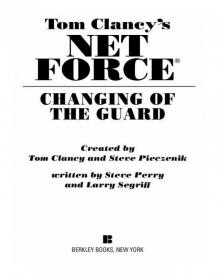 Changing of the Guard
Changing of the Guard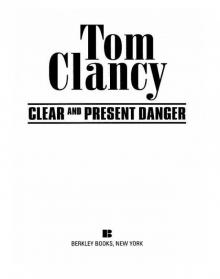 Clear and Present Danger
Clear and Present Danger Hounds of Rome
Hounds of Rome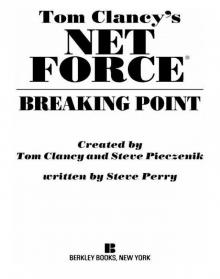 Breaking Point
Breaking Point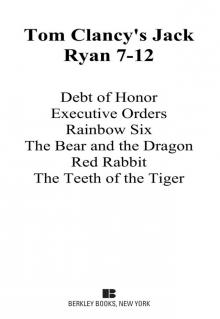 Tom Clancy's Jack Ryan Books 7-12
Tom Clancy's Jack Ryan Books 7-12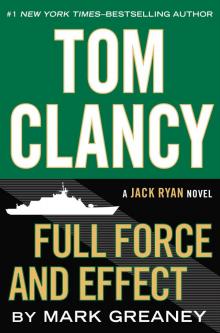 Full Force and Effect
Full Force and Effect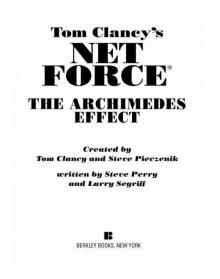 The Archimedes Effect
The Archimedes Effect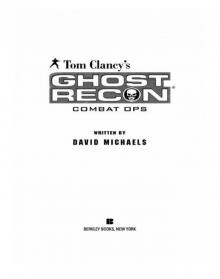 Combat Ops
Combat Ops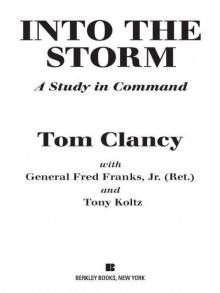 Into the Storm: On the Ground in Iraq
Into the Storm: On the Ground in Iraq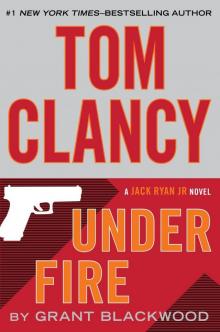 Under Fire
Under Fire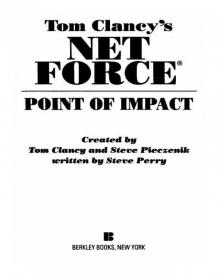 Point of Impact
Point of Impact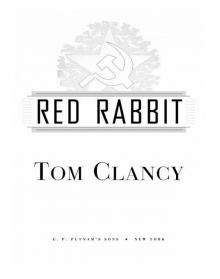 Red Rabbit
Red Rabbit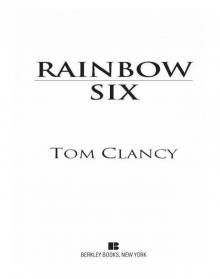 Rainbow Six
Rainbow Six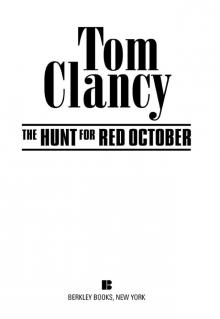 The Hunt for Red October
The Hunt for Red October The Teeth of the Tiger
The Teeth of the Tiger Conviction (2009)
Conviction (2009)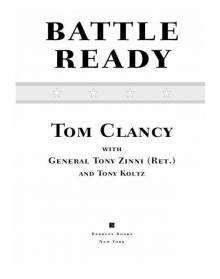 Battle Ready
Battle Ready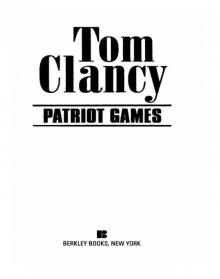 Patriot Games
Patriot Games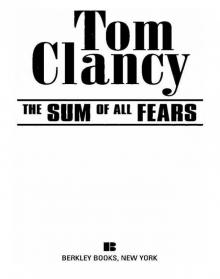 The Sum of All Fears
The Sum of All Fears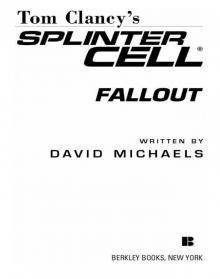 Fallout (2007)
Fallout (2007)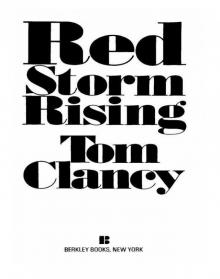 Red Storm Rising
Red Storm Rising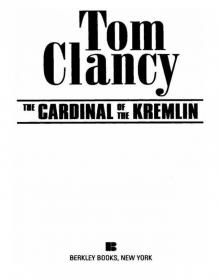 The Cardinal of the Kremlin
The Cardinal of the Kremlin Executive Orders
Executive Orders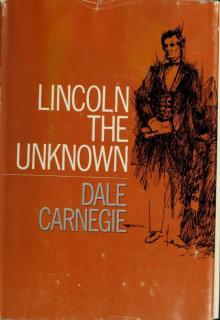 Lincoln, the unknown
Lincoln, the unknown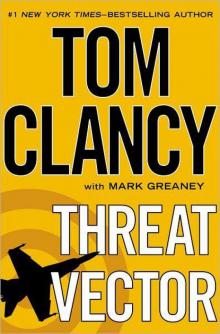 Threat Vector
Threat Vector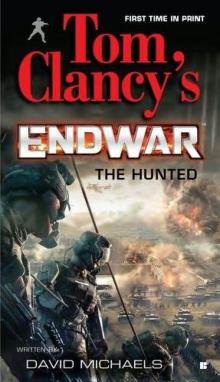 The Hunted
The Hunted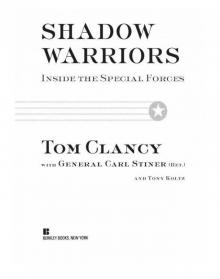 Shadow Warriors: Inside the Special Forces
Shadow Warriors: Inside the Special Forces End Game
End Game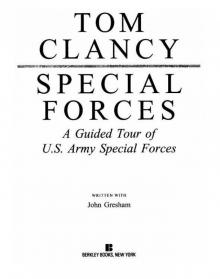 Special Forces: A Guided Tour of U.S. Army Special Forces
Special Forces: A Guided Tour of U.S. Army Special Forces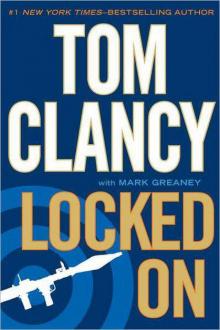 Locked On
Locked On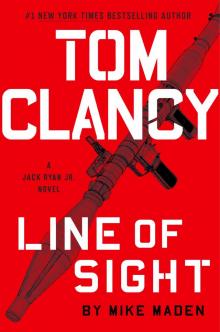 Line of Sight
Line of Sight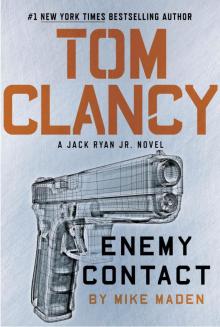 Tom Clancy Enemy Contact - Mike Maden
Tom Clancy Enemy Contact - Mike Maden Fighter Wing: A Guided Tour of an Air Force Combat Wing
Fighter Wing: A Guided Tour of an Air Force Combat Wing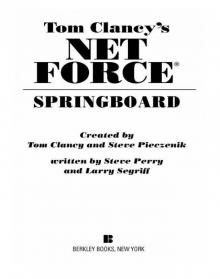 Springboard
Springboard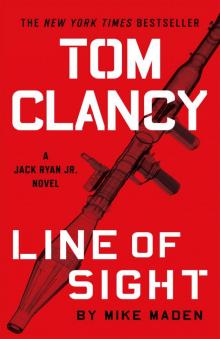 Line of Sight - Mike Maden
Line of Sight - Mike Maden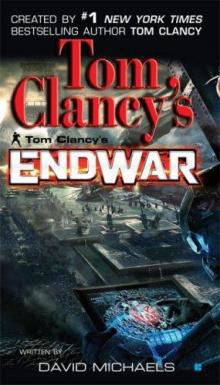 EndWar
EndWar Dead or Alive
Dead or Alive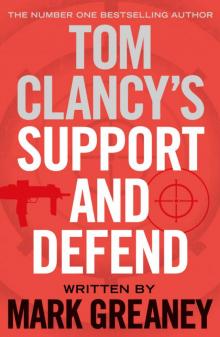 Tom Clancy Support and Defend
Tom Clancy Support and Defend Checkmate
Checkmate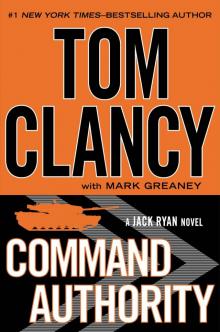 Command Authority
Command Authority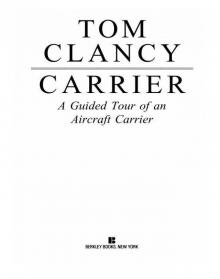 Carrier: A Guided Tour of an Aircraft Carrier
Carrier: A Guided Tour of an Aircraft Carrier Blacklist Aftermath
Blacklist Aftermath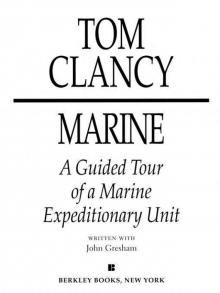 Marine: A Guided Tour of a Marine Expeditionary Unit
Marine: A Guided Tour of a Marine Expeditionary Unit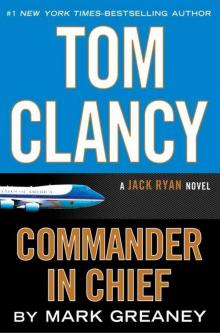 Commander-In-Chief
Commander-In-Chief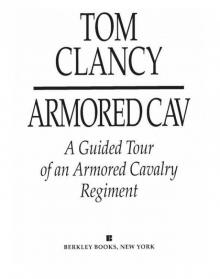 Armored Cav: A Guided Tour of an Armored Cavalry Regiment
Armored Cav: A Guided Tour of an Armored Cavalry Regiment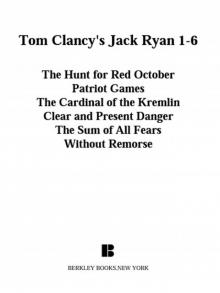 Tom Clancy's Jack Ryan Books 1-6
Tom Clancy's Jack Ryan Books 1-6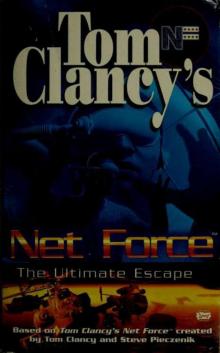 The Ultimate Escape
The Ultimate Escape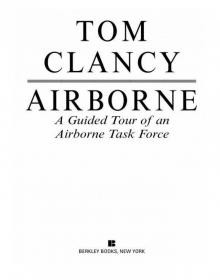 Airborne: A Guided Tour of an Airborne Task Force
Airborne: A Guided Tour of an Airborne Task Force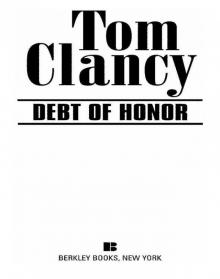 Debt of Honor
Debt of Honor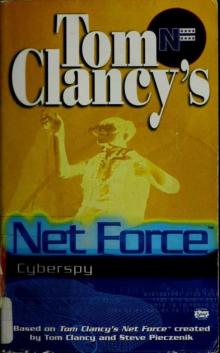 Cyberspy
Cyberspy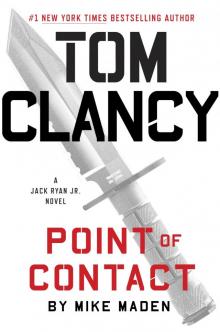 Point of Contact
Point of Contact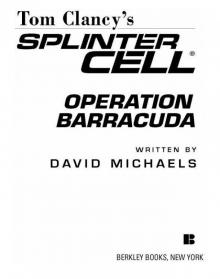 Operation Barracuda (2005)
Operation Barracuda (2005)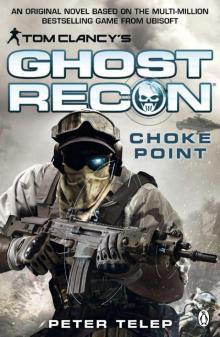 Choke Point
Choke Point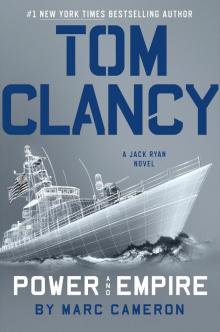 Power and Empire
Power and Empire Every Man a Tiger: The Gulf War Air Campaign
Every Man a Tiger: The Gulf War Air Campaign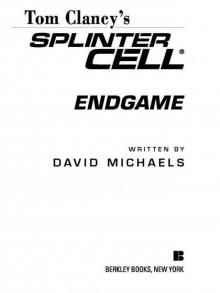 Endgame (1998)
Endgame (1998)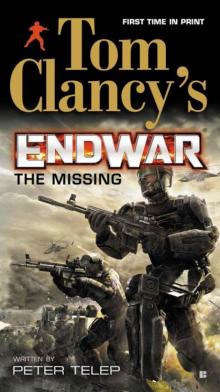 EndWar: The Missing
EndWar: The Missing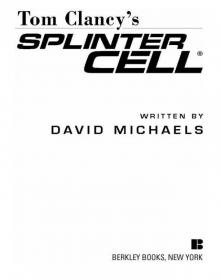 Splinter Cell (2004)
Splinter Cell (2004)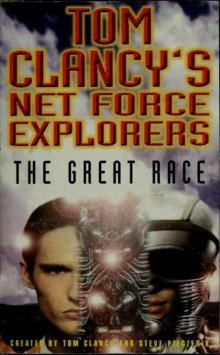 The Great Race
The Great Race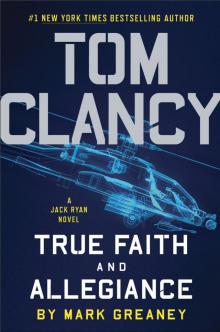 True Faith and Allegiance
True Faith and Allegiance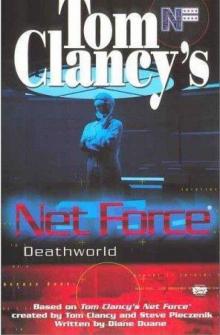 Deathworld
Deathworld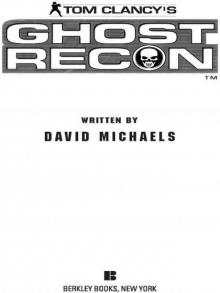 Ghost Recon (2008)
Ghost Recon (2008)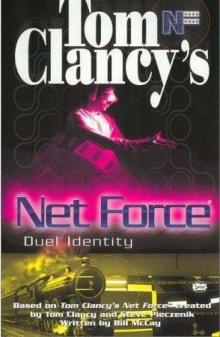 Duel Identity
Duel Identity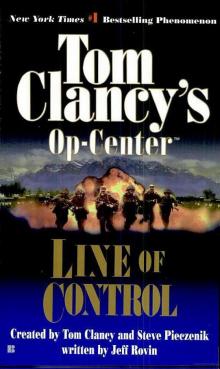 Line of Control o-8
Line of Control o-8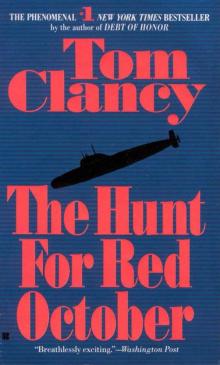 The Hunt for Red October jr-3
The Hunt for Red October jr-3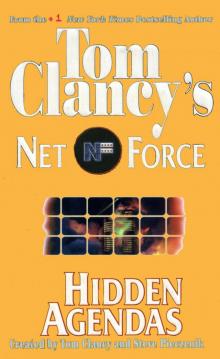 Hidden Agendas nf-2
Hidden Agendas nf-2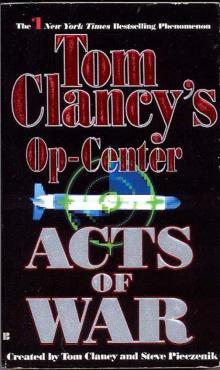 Acts of War oc-4
Acts of War oc-4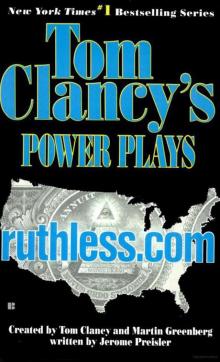 Ruthless.Com pp-2
Ruthless.Com pp-2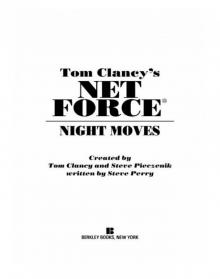 Night Moves
Night Moves The Hounds of Rome - Mystery of a Fugitive Priest
The Hounds of Rome - Mystery of a Fugitive Priest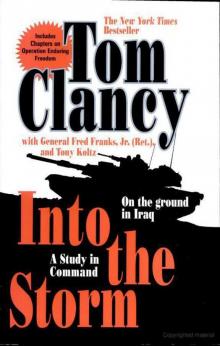 Into the Storm: On the Ground in Iraq sic-1
Into the Storm: On the Ground in Iraq sic-1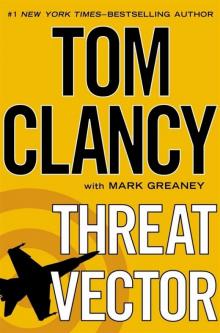 Threat Vector jrj-4
Threat Vector jrj-4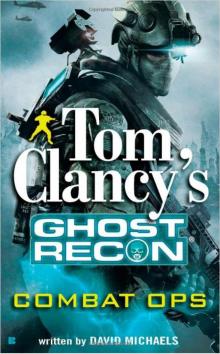 Combat Ops gr-2
Combat Ops gr-2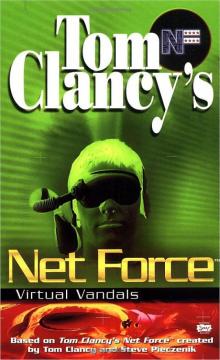 Virtual Vandals nfe-1
Virtual Vandals nfe-1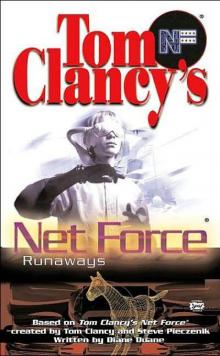 Runaways nfe-16
Runaways nfe-16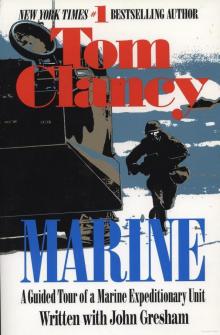 Marine: A Guided Tour of a Marine Expeditionary Unit tcml-4
Marine: A Guided Tour of a Marine Expeditionary Unit tcml-4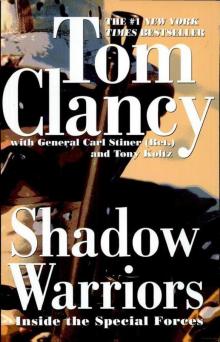 Shadow Warriors: Inside the Special Forces sic-3
Shadow Warriors: Inside the Special Forces sic-3 Jack Ryan Books 1-6
Jack Ryan Books 1-6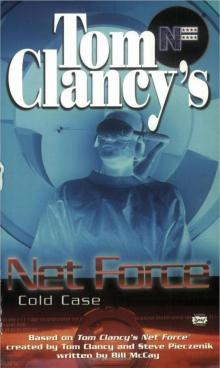 Cold Case nfe-15
Cold Case nfe-15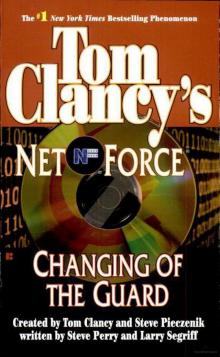 Changing of the Guard nf-8
Changing of the Guard nf-8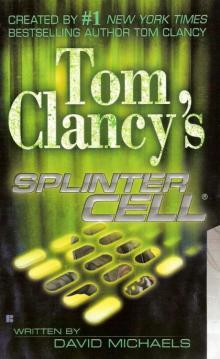 Splinter Cell sc-1
Splinter Cell sc-1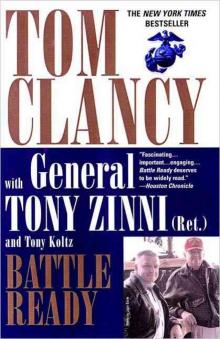 Battle Ready sic-4
Battle Ready sic-4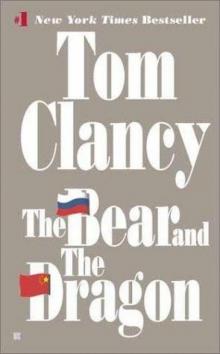 The Bear and the Dragon jrao-11
The Bear and the Dragon jrao-11 Fighter Wing: A Guided Tour of an Air Force Combat Wing tcml-3
Fighter Wing: A Guided Tour of an Air Force Combat Wing tcml-3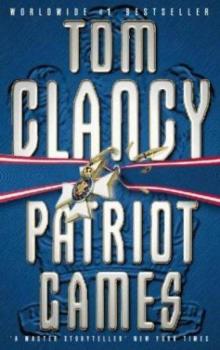 Patriot Games jr-1
Patriot Games jr-1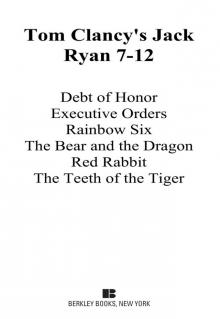 Jack Ryan Books 7-12
Jack Ryan Books 7-12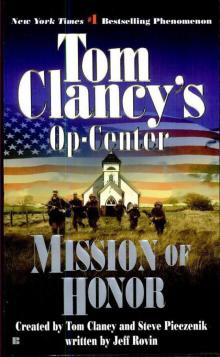 Mission of Honor o-9
Mission of Honor o-9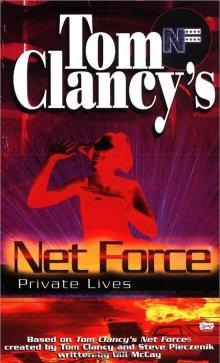 Private Lives nfe-9
Private Lives nfe-9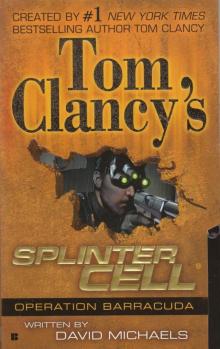 Operation Barracuda sc-2
Operation Barracuda sc-2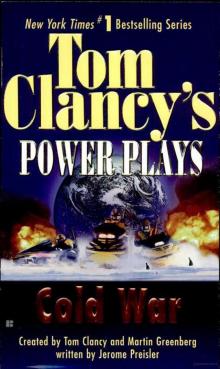 Cold War pp-5
Cold War pp-5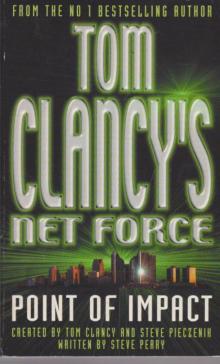 Point of Impact nf-5
Point of Impact nf-5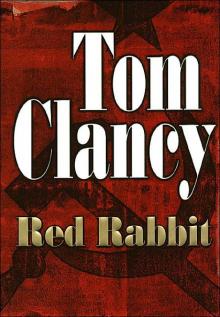 Red Rabbit jr-9
Red Rabbit jr-9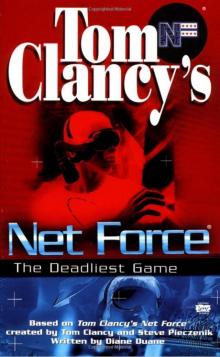 The Deadliest Game nfe-2
The Deadliest Game nfe-2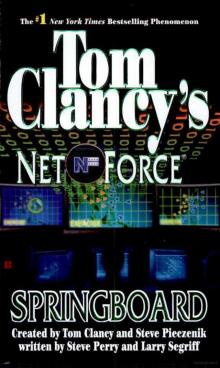 Springboard nf-9
Springboard nf-9 Safe House nfe-10
Safe House nfe-10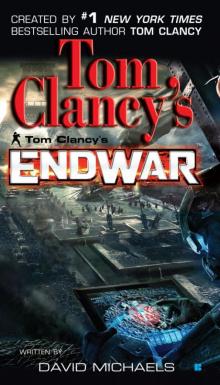 EndWar e-1
EndWar e-1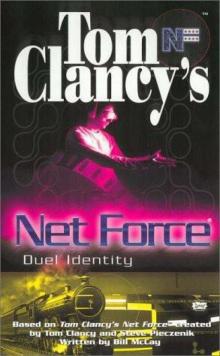 Duel Identity nfe-12
Duel Identity nfe-12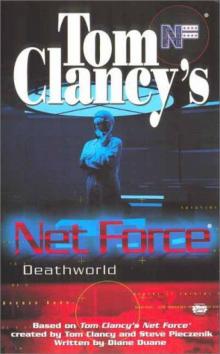 Deathworld nfe-13
Deathworld nfe-13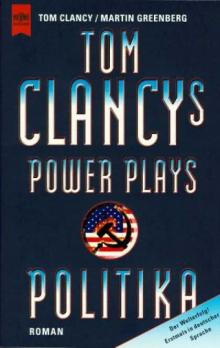 Politika pp-1
Politika pp-1 Rainbow Six jr-9
Rainbow Six jr-9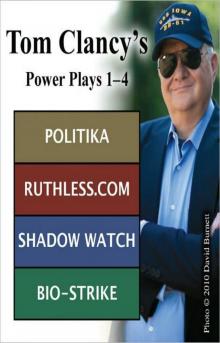 Tom Clancy's Power Plays 1 - 4
Tom Clancy's Power Plays 1 - 4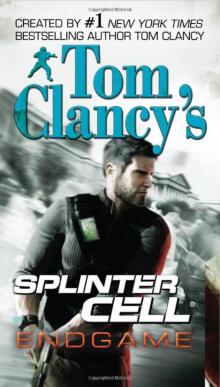 Endgame sc-6
Endgame sc-6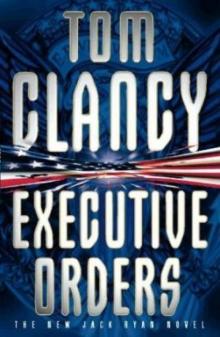 Executive Orders jr-7
Executive Orders jr-7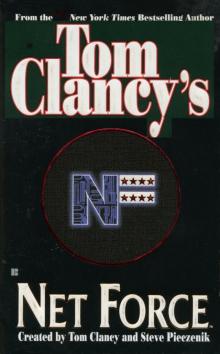 Net Force nf-1
Net Force nf-1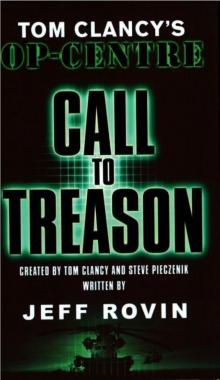 Call to Treason o-11
Call to Treason o-11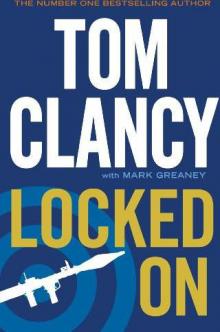 Locked On jrj-3
Locked On jrj-3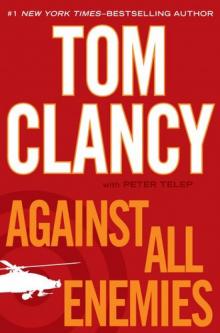 Against All Enemies
Against All Enemies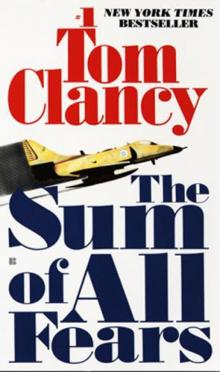 The Sum of All Fears jr-7
The Sum of All Fears jr-7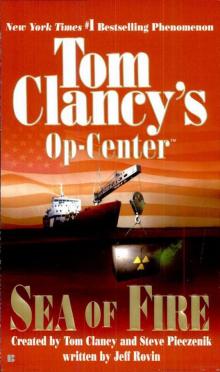 Sea of Fire o-10
Sea of Fire o-10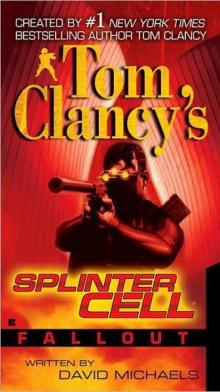 Fallout sc-4
Fallout sc-4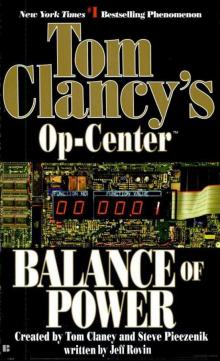 Balance of Power o-5
Balance of Power o-5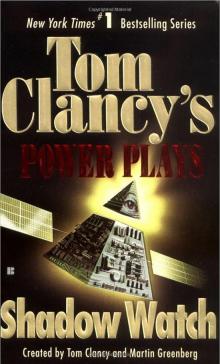 Shadow Watch pp-3
Shadow Watch pp-3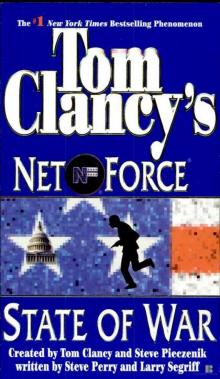 State of War nf-7
State of War nf-7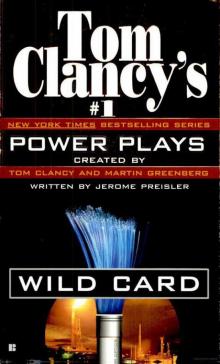 Wild Card pp-8
Wild Card pp-8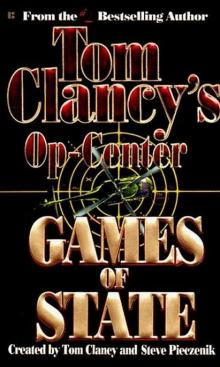 Games of State o-3
Games of State o-3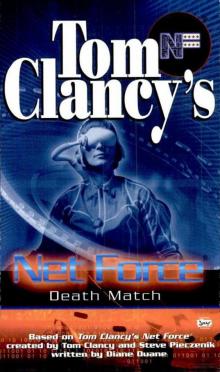 Death Match nfe-18
Death Match nfe-18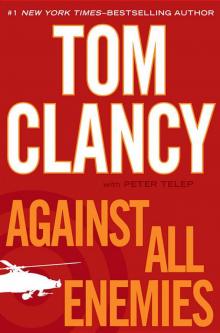 Against All Enemies mm-1
Against All Enemies mm-1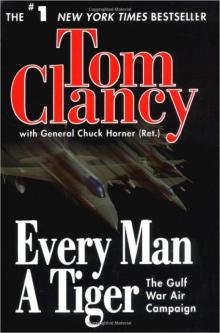 Every Man a Tiger: The Gulf War Air Campaign sic-2
Every Man a Tiger: The Gulf War Air Campaign sic-2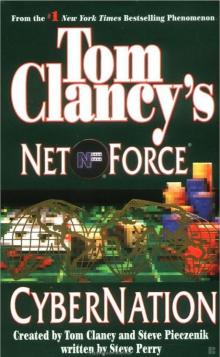 Cybernation nf-6
Cybernation nf-6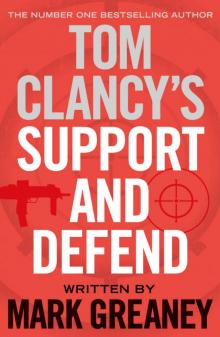 Support and Defend
Support and Defend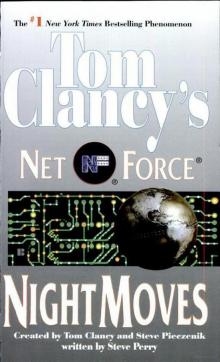 Night Moves nf-3
Night Moves nf-3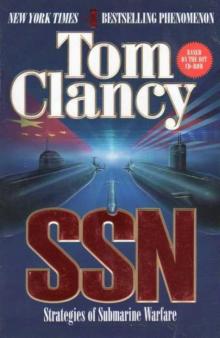 SSN
SSN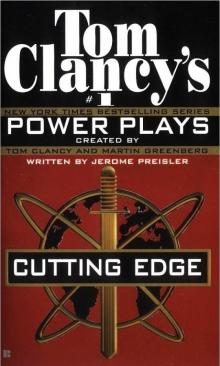 Cutting Edge pp-6
Cutting Edge pp-6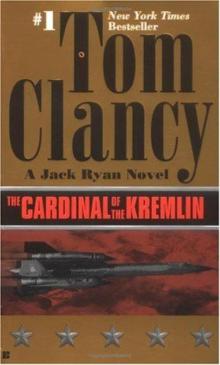 The Cardinal of the Kremlin jrao-5
The Cardinal of the Kremlin jrao-5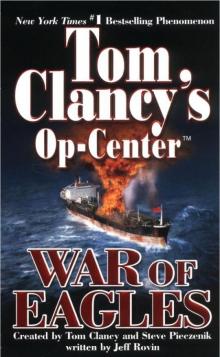 War of Eagles o-12
War of Eagles o-12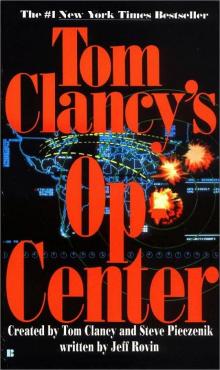 Op-Center o-1
Op-Center o-1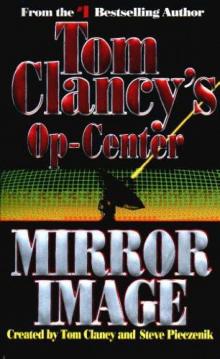 Mirror Image o-2
Mirror Image o-2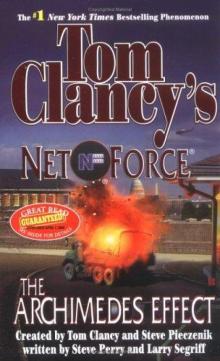 The Archimedes Effect nf-10
The Archimedes Effect nf-10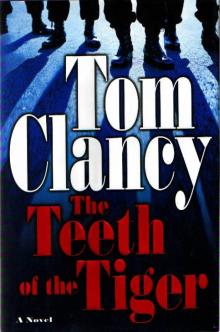 Teeth of the Tiger jrj-1
Teeth of the Tiger jrj-1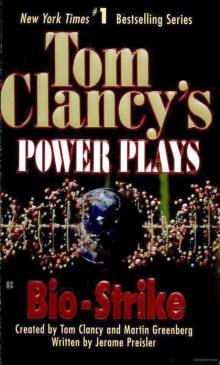 Bio-Strike pp-4
Bio-Strike pp-4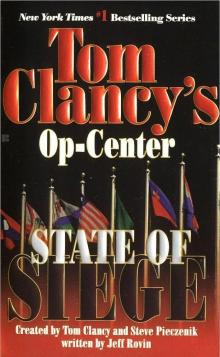 State of Siege o-6
State of Siege o-6 Debt of Honor jr-6
Debt of Honor jr-6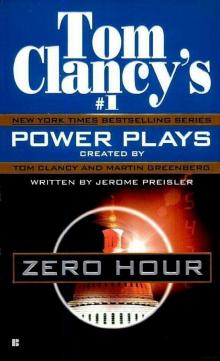 Zero Hour pp-7
Zero Hour pp-7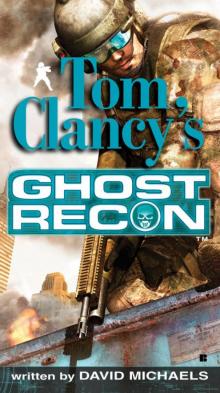 Ghost Recon gr-1
Ghost Recon gr-1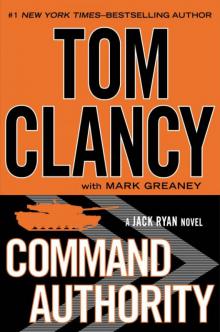 Command Authority jr-10
Command Authority jr-10 Tom Clancy's Power Plays 5 - 8
Tom Clancy's Power Plays 5 - 8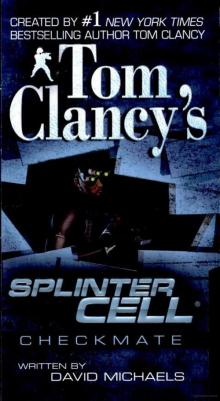 Checkmate sc-3
Checkmate sc-3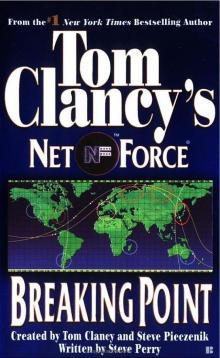 Breaking Point nf-4
Breaking Point nf-4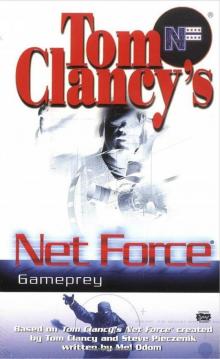 Gameprey nfe-11
Gameprey nfe-11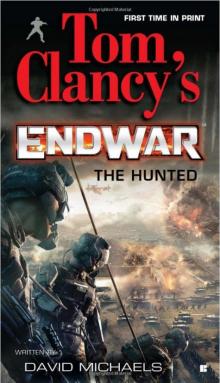 The Hunted e-2
The Hunted e-2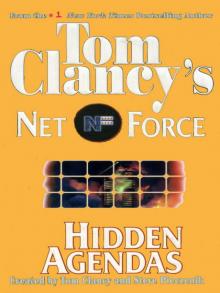 Hidden Agendas
Hidden Agendas Divide and Conquer o-7
Divide and Conquer o-7